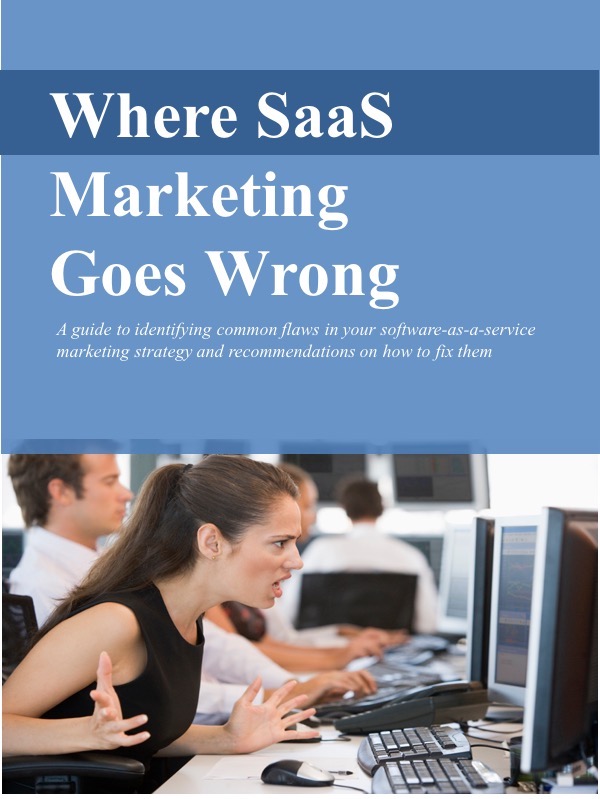How to Lose a Customer in the First 90 Days
/Bravo! You’ve landed a new customer.
You’ve successfully lead someone through the tortuous process from a lead to a qualified opportunity, maybe to a free trialer, and finally to a paying customer.
And you’ve been racking up customer acquisition costs all along the way. Whatever tactics you use – search engine marketing, events, email, webinars, etc. – they all cost money.
So now that that prospective customer is a paying customer, it’s time to start to recover those costs.
The SaaS customer acquisition machine
That’s exactly how the software-as-a-service (SaaS) business model is supposed to work. You invest money up front to acquire a customer, and over time you collect enough revenue from the customer to recover the money.
With a well-functioning SaaS customer acquisition machine in place, you should be putting in $1 for customer acquisition cost at one end, and $3, $4, $5 or more should come out the other end.
Of course, the machine only works if the paying customer sticks around long enough to recover your acquisition costs. If you put in $1 and the customer only pays for 3 months, you may only see 25 cents in return. Your machine is broken.
Right about now you might be asking “How long is long enough?” How many months or years do you need to hang on to that customer?
That depends on how much it cost to acquire the customer and how much they’re paying you. The higher the customer acquisition cost (CAC) and/or the lower the revenue, the longer the payback period. (See a more complete discussion of “paying today for a return tomorrow” in this post on the “Wimpy Effect.”)
Why customers leave too soon
Lots of customers will try a solution for 2-3 months. With most SaaS solutions, deployment is hassle-free, and there’s no upfront license fee or long term commitment. That’s the good news.
Here’s the bad news. For those very same reasons, it’s easy for them to leave after 2-3 months.
Why does that happen?
Sometimes the customer figures out that the solution just isn’t the right fit for their problem. Stuff like that happens every once in awhile, and you really can’t do much about it.
But there are other problems that you can do something about.
Poor on-boarding
No matter how simple you think your product is to learn and use, in most cases a new customer needs at least a little bit of guidance to get started. A “quick start” guide, helpful “sign-posts” built into the product, or a “getting started” video might be all that’s needed to get them started and to build their confidence. (Most folks don’t have time for an hours-long training course anyway.)
This kind of on-boarding help is especially important when there are many users (for example, an HR application used by every employee) or there’s a lot of existing data to be imported into the new system. Without some help to get over these initial barriers, new customers may never actually deploy the solution.
In the world of on-premise, licensed software, this is fondly referred to as “shelfware.” The difference in the SaaS world, however, is that the vendor doesn’t receive a large upfront license payment, and customers won’t keep paying for a subscription that they don’t use. They’ll leave.
Reality doesn’t match the promise
Marketing and selling SaaS solutions is really about marketing and selling promises. The vendor promises to deliver certain functionality over the course of the subscription. (See “SaaS Marketing is About Promises, not Products.”)
If the actual solution doesn’t deliver on the promise, new customers will not only be disappointed with the functionality of the product. They’ll lose confidence in the SaaS vendor. And then they’ll leave.
Gotcha pricing
In many cases, it makes sense for the SaaS vendor to publish their prices on their website.
Prospective customers need the information to see if the solution fits within their budget. They may also see it as an indication of the vendor’s transparency.
New customers rightly expect that the price they pay is the price that’s posted. And they’re usually surprised, disappointed, and even upset when it’s not. When the invoice includes “extras” such as a required minimum number of users, a mandatory data migration fee, or other unexpected “gotchas,” new customers are not happy. And they leave.
Marketing extends to customer retention
For SaaS marketers, the customer acquisition process does not end once the prospective customer converts into a paying customer. The SaaS model doesn’t really work that way.
Success requires that you hang on to that paying customer for awhile. SaaS providers that don’t pay attention to retaining new customers – especially through the first critical 90 days – will fail.
